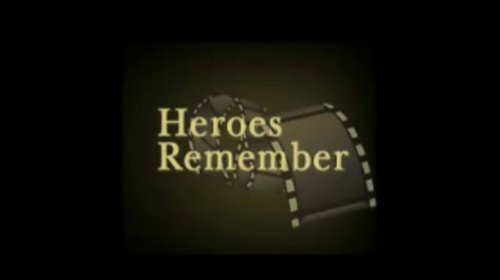I had no room to manoeuvre
First World War Audio Archive
I had no room to manoeuvre
Transcript
Pilot posing in front of airplane wing, while crews work on it.
too. A piece of shrapnel went through the crankcase of the engineBi-plane banking left.
and lost all the oil. Well, the minute it hit, I knew somethingPlane flying through smoke.
serious had happened. And I waved my wings to show I wasBi-plane flying above country road.
turning back, out of the formation, and rest of them to go ahead, and I did. I turned back. And I had about 8000 feet at that timePlane doing a fly-by over the camera.
Pilot looking out the right side of his plane.
and so I could go about seven or eight miles anyway. And I set the trim tabs and everything minimum and I throttled the engineBi-plane turning left over the horizon.
right back instead of leaving it on. And it kept ticking over, combined speed and glide and so on. I was just hoping that theView from the front of the plane.
Germans wouldn’t realize it and wouldn’t chase me back over our own lines. That was all because I had no room to manoeuver at all I just had to glide and let it go at that and why they didn’t,Front angle view of plane.
I wouldn’t know but there weren’t any around at that time. This was anti-aircraft fire, you see, that hit me. And I got backPlane flying by soldiers in trenches.
over our lines and I landed at another aerodrome which was a little bit closer from where I was at that time than ours andBi-planes parked in air-field.
that was 209 squadron and that happened to be Collishaw squadron. And the boys there treated me royally, and so on, and brought in this thing with a dead stick, you see, and landed it. Oh, I was lucky. Looking back on it now, I guess I’ve been lucky.Pilots gathered in a group.
Description
Mr. Dickins describes an incident wherein a piece of shrapnel disables his engine and he has to fly back to base “dead stick.”
Clennell Haggerston ‘Punch’ Dickins
Clennell Haggerston ‘Punch’ Dickins was born in Portage la Prairie on January 12, 1899. He interrupted his education at the University of Alberta in 1917 by enlisting in the 196th Battalion, having already completed an officer training course. After being sent to England, he joined the 21st Reserve Battalion. His brother, an observer with the Flying Corps, convinced him to join the Air Force. Mr. Dickins jumped from the Canadian to the British Army in order to facilitate a transfer to the Air Force. Once there, he trained at Tetford in a Morris Marmon Shorthorn. His active duty was with 211 Squadron at Dunkirk. Mr. Dickins and his gunner are credited with 7 enemy aircraft destroyed, for which he was awarded the Distinguished Flying Cross. After the war, he spent time in the RCAF, with whom he did aerial photo-survey work. However, most of his civilian career was spent flying in Canada’s North, adapting aircraft for Arctic flight. He became one of Canada’s most famous bush pilots and a pioneer in aviation. Mr. Dickins and his wife Connie (nee Gerrie) lived in Gold Pines, Ontario. Mr. Dickins died on August 2, 1995.
Meta Data
- Medium:
- Video
- Owner:
- Veterans Affairs Canada
- Duration:
- 1:28
- Person Interviewed:
- Clennell Haggerston ‘Punch’ Dickins
- War, Conflict or Mission:
- First World War
- Location/Theatre:
- Europe
- Branch:
- Army
- Units/Ship:
- 196th Battalion
- Rank:
- Second Lieutenant
- Occupation:
- Pilot
Attestation
Related Videos
- Date modified:



